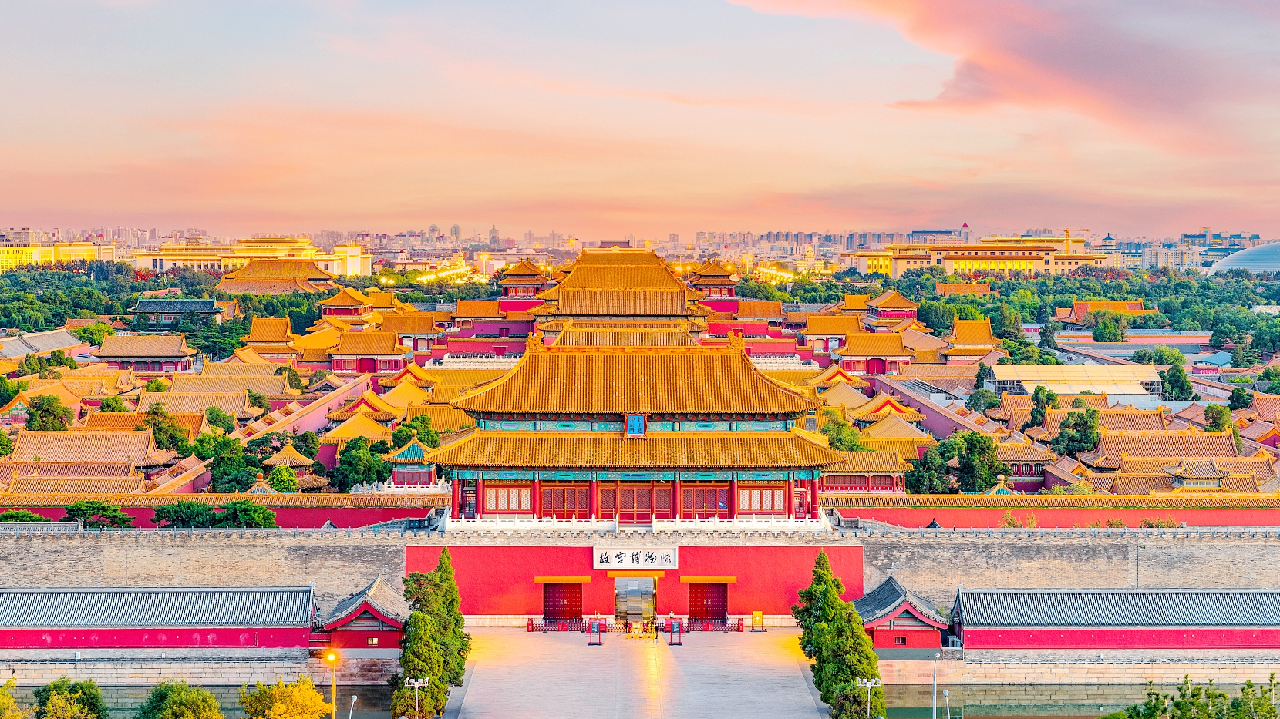The Beijing Central Axis – a building ensemble that runs through the core area of the Chinese capital – was included in UNESCO's World Heritage List on Saturday during the 46th session of the World Heritage Committee in New Delhi, India. The Central Axis stretches 7.8 kilometers from Yongding Gate in the south to the Bell Tower and Drum Tower in the north.
Most of the essential buildings in the old city of Beijing are constructed along the axis, including more than a dozen key cultural heritage sites: the Palace Museum, Jingshan Park, the Drum and Bell Towers, the Temple of Heaven, Qianmen Street and the Tian'anmen Square complex among others. Originating in the Yuan Dynasty (1271-1368), the Beijing Central Axis organizes the imperial palaces, the imperial city, temples and altars, markets, and streets, which is regarded as the most representative and important section of the old city of Beijing and demonstrates the magnificent spatial order of the urban space. Experts say the Beijing Central Axis reflects the evolution and accumulation of the historic urban landscape over the last eight centuries.

The Central Axis changes as Beijing evolves. Preparation work for the Central Axis to be recognized as a UNESCO World Heritage site started in 2011. Since then, the Beijing government has initiated more than 100 renovation projects for cultural relics on the axis.
For example, Shouhuang Palace in Jingshan Park reopened its doors in 2018 after a four-year restoration, and the Bell Tower finished its year-long refurbishment and resumed operation in January 2022..



















